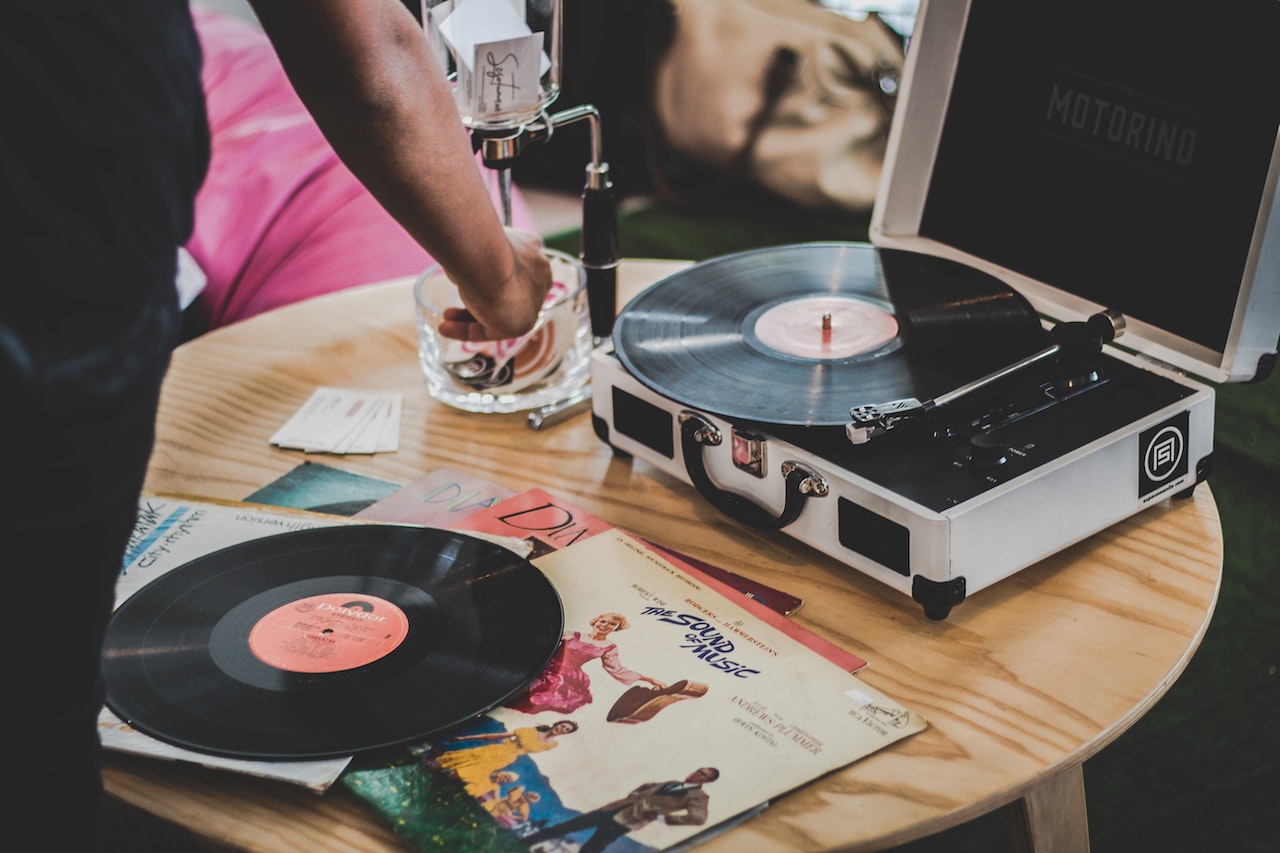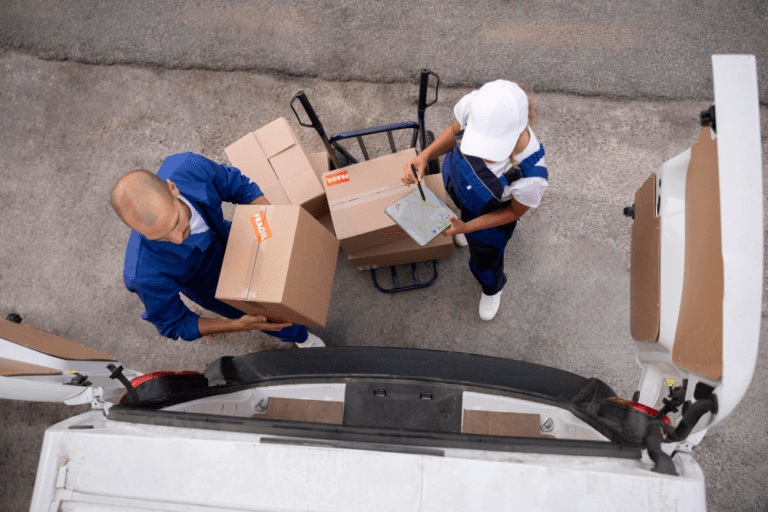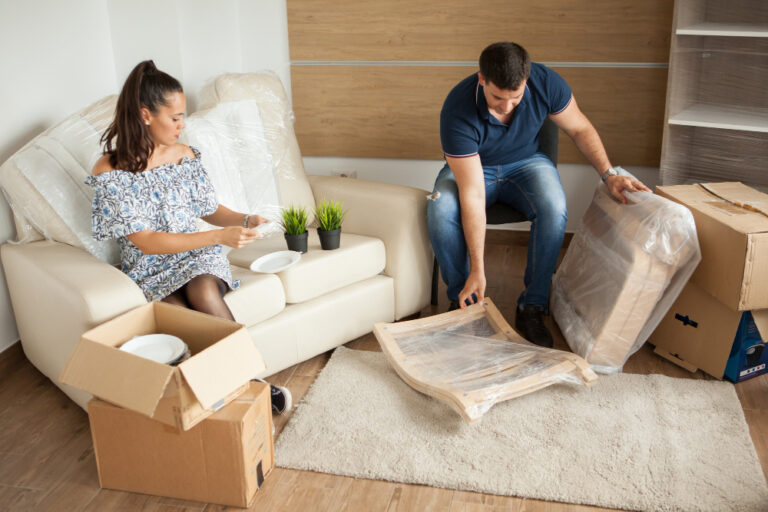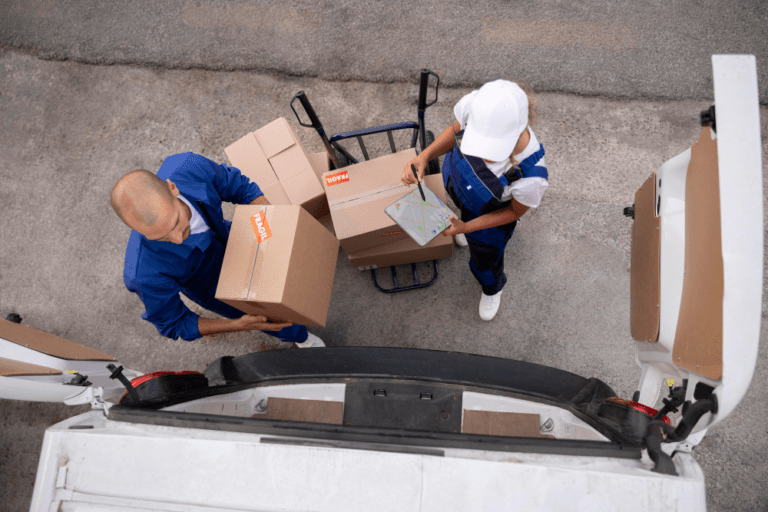When it comes to moving, one of the most treasured and delicate items in our collection is often our vinyl records. These timeless pieces not only hold sentimental value but are also susceptible to damage if not packed correctly. With the rise in vinyl’s popularity, ensuring their safe transportation becomes paramount.
Whether you’re a seasoned collector or a new enthusiast, How do you pack vinyl records for moving? At “Friends Moving,” we understand the intricacies involved in moving such precious items. With 15 years of experience under our belt, we’ve mastered the art of moving vinyl records safely.
In this guide, we’ll share our expert insights on how to pack your vinyl records to ensure they reach your new home in pristine condition. Dive in and find the best practices, tips, and tricks to make your move as smooth as your favorite record playback.
Why Vinyl Records Need Special Attention
Vinyl records, with their rich history and unique sound quality, are more than just musical discs; they are pieces of art. Their delicate nature and specific structure make them susceptible to damage if not handled with care. Here’s a deeper dive into why these cherished items demand special attention:
1. Material Sensitivity
Vinyl records are crafted from a unique plastic known as polyvinyl chloride. This material, while durable in many respects, is particularly sensitive to external factors. Exposure to heat can cause the vinyl to soften and warp, while moisture can degrade its quality. Direct sunlight can lead to discoloration and even alter the record’s structural integrity. Therefore, it’s essential to store and pack them away from these harmful elements.
2. Groove Vulnerability
The intricate grooves on a vinyl record are its heartbeat. These grooves carry the sound waves that our record players translate into music. Even the slightest scratches, often invisible to the naked eye, can distort the sound, causing skips or pops during playback. Dust particles, if allowed to settle, can further embed into these grooves, leading to long-term damage.
3. Warpage Risk
Vinyl records are designed to be stored vertically. When placed horizontally, especially underweight, they risk becoming warped. A warped record doesn’t just play poorly; it can also put undue stress on the record player’s needle, potentially causing further damage to both the record and the player.
4. Edge Fragility
While the main surface of a vinyl record is relatively robust, its edges are a different story. They are prone to chipping, cracking, or fraying, especially when jostled or dropped. Such damage not only affects the aesthetic of the record but can also make it challenging to play.
5. Static Electricity
One of the lesser-known quirks of vinyl records is their ability to generate static electricity. This static charge acts as a magnet for dust and other fine particles. Over time, this accumulated dust can degrade the record’s sound quality and even lead to permanent damage if not cleaned regularly.
6. Value and Rarity
Vinyl records aren’t just pieces of music; they are often collectibles. Some editions, especially first presses or limited releases, can fetch high prices in the collector’s market. Damaging such a record isn’t just about losing a piece of music; it’s about losing a valuable artifact. The rarity of these items amplifies the need for their meticulous care.
7. Emotional Connection
Beyond the tangible aspects, vinyl records often carry intangible value. They might be tied to memories of a first dance, a gift from a loved one, or a reminder of a particular time in one’s life. This deep emotional connection makes it all the more crucial to ensure they are treated with the utmost care during a move.
Read More: How to organize a stress-free move in Vero Beach
Materials You’ll Need
When it comes to moving vinyl records, having the right packing materials is half the battle. Ensuring that these musical treasures are protected from potential harm during transit requires a combination of cushioning, sealing, and labeling. Here’s a concise breakdown of the essential materials you’ll need to pack your vinyl records safely:
- Protective Sleeves: These are essential for individual record protection. Made of plastic or paper, protective sleeves shield the vinyl from dust, scratches, and direct contact with other surfaces. They also help in reducing static build-up.
- Sturdy Boxes: Opt for boxes specifically designed for vinyl records or ones that are of a similar size. These boxes should be robust enough to handle the weight without bending or collapsing, ensuring the records remain vertical during the move.
- Bubble Wrap: This provides an additional layer of cushioning. Wrapping each record (in its sleeve) with bubble wrap ensures protection against shocks or accidental drops during transit.
- Packing Paper: Useful for filling any voids inside the box, packing paper prevents the records from shifting around. It acts as a buffer, reducing the risk of internal friction or impact.
- Cushioning Materials: Apart from bubble wrap and packing paper, consider using foam inserts or air-filled plastic bags. These provide extra padding, especially for rare or particularly valuable records.
- Packing Tape: High-quality packing tape is crucial. It ensures that the boxes remain sealed during the move, protecting the records from external elements like moisture or dust.
- Markers: Clearly labeling each box with details like “Fragile,” “Vinyl Records,” or even the genre can make unpacking easier and alert movers to handle them with care.
Step-by-Step Guide on Packing Vinyl Records
Packing vinyl records for a move is not just about placing them in a box and hoping for the best. It’s a meticulous process that ensures the safety and longevity of your cherished collection.
1. Cleaning the Records
Before you even think about packing, it’s essential to clean each record thoroughly. Use a soft, anti-static brush or a specialized record-cleaning solution to gently remove any dust or debris from the surface.
Ensure you clean in a circular motion, following the grooves. This step not only ensures that your records are free from particles that could cause scratches but also reduces the chances of static build-up, which can attract more dust.
2. Placing Them in Protective Sleeves
Once cleaned, each record should be placed in its protective sleeve. If the original sleeve is damaged or missing, consider investing in new poly-lined sleeves. These sleeves offer a dual advantage: they protect the record from scratches and reduce static electricity.
Remember, the sleeve isn’t just for the vinyl; the album cover, if available, should also be protected to preserve the artwork and any associated information.
3. Stacking Them Vertically
When placing records in a box, always stack them vertically, like books on a shelf. Horizontal stacking can lead to warping over time, especially under the weight of multiple records. Vertical placement ensures even weight distribution and reduces the risk of records bending or warping during transit.
4. Cushioning and Boxing
Once your records are sleeved and ready, it’s time to box them. Start by lining the bottom of your sturdy box with cushioning materials like bubble wrap or foam inserts. Place the vertically stacked records inside, ensuring there’s no excessive space for them to move around.
Fill any gaps with additional cushioning materials like packing paper or air-filled plastic bags. This step ensures that the records remain snug and secure, minimizing the risk of internal movement or friction.
5. Sealing and Labeling
With your records safely boxed, the final steps are sealing and labeling. Use high-quality packing tape to securely seal the top and bottom of the box. Ensure the tape adheres well, offering an added layer of protection against external elements.
Once sealed, grab a marker and label the box. Indications like “Fragile,” “Handle with Care,” or “Vinyl Records” can alert movers or anyone handling the box about its precious contents. If you’ve categorized your records (by genre, artist, or era), consider noting that on the box as well for easier unpacking.
6. Final Check
Listen for any movement inside. If you hear or feel records shifting, reopen the box and add more cushioning. This final check ensures that your records are as secure as possible and ready for the journey ahead.
Read More: Preparing for a Long-Distance Move from Vero Beach
Common Mistakes to Avoid
Here’s a quick rundown of common pitfalls to sidestep when packing your vinyl records:
- Stacking Records Horizontally: This is a cardinal sin in the world of vinyl. Horizontal stacking, especially underweight, can lead to warping. Always ensure records are stored and packed vertically to maintain their shape and sound quality.
- Overloading Boxes: While it might seem efficient to pack as many records as possible into one box, this can strain the box and increase the risk of damage. It’s better to use multiple boxes, ensuring each is comfortably filled but not overloaded.
- Using Newspaper Directly on Records: Newspapers have ink that can transfer onto the vinyl or its sleeve, causing stains and potential damage. Always use clean packing paper or bubble wrap directly on the records.
- Ignoring Climate Control: Vinyl is sensitive to temperature. Avoid leaving packed records in places with extreme temperatures, like a hot car or a damp basement.
- Skipping Cleaning: Packing dirty records can lead to scratches or degrade sound quality. Always clean records before packing.
- Using Damaged or Weak Boxes: A compromised box can collapse or tear, risking damage to its contents. Always use sturdy, undamaged boxes for packing.
- Forgetting to Label: An unlabeled box can be easily overlooked or mishandled. Always label boxes clearly, indicating their fragile nature and contents.
Additional Services Offered by Friends Moving
At Friends Moving, we pride ourselves on offering more than just basic moving services. Our commitment to ensuring a seamless moving experience has led us to develop a range of specialized services tailored to meet diverse needs.
Here’s a snapshot of what we bring to the table:
- Full-service Packing: Beyond just moving your items, we offer comprehensive packing services. Our team is trained to pack everything, from everyday items to precious antiques, ensuring their safety during transit.
- Specialty Moving Services: Recognizing that some items require extra care, we offer specialty moving services. Whether it’s a grand piano, artwork, or your cherished vinyl collection, we have the expertise to handle it.
- Storage Options: If you’re in between moves or just need extra space, our secure storage facilities are at your disposal. With both short-term and long-term options available, you can trust your belongings are safe with us.
- Personalized Moving Consultation: Understanding that every move is unique, we offer personalized moving consultations. Our experts sit down with you to discuss your specific needs, evaluate potential challenges, and craft a moving plan tailored just for you, ensuring a hassle-free experience.
- Eco-friendly Packing Options: In our commitment to sustainability, Friends Moving offers eco-friendly packing options. We provide reusable packing materials and boxes, reducing waste and ensuring an environmentally conscious moving process. This not only protects your items but also our planet.
Testimonials: Success Stories of Moving Vinyl with Friends Moving
The feedback we receive from our valued customers is a testament to our dedication and expertise. One avid vinyl collector shared, “I was apprehensive about moving my decades-old vinyl collection, but Friends Moving treated each record as if it were a piece of their own history.
The care and attention to detail were unparalleled.” Their sentiments echo the experiences of many who have entrusted us with their prized possessions. Another memorable instance involved a customer with a rare and invaluable vinyl collection, including first editions and signed copies.
The move was cross-country, adding layers of complexity. They recounted, “The journey was long, and the stakes were high. But Friends Moving rose to the challenge, ensuring every single record arrived in impeccable condition, much to my relief and gratitude.”
Conclusion
The art of moving vinyl records goes beyond mere transportation; it’s about preserving memories, music, and value. Proper packing is paramount, but challenges can arise. That’s why, at Friends Moving, we encourage you to lean on professionals who understand the nuances of such moves.
With expertise, care, and a passion for what we do, we’re here to ensure your vinyl records and every other possession are moved with the utmost precision and care. So contact us today for your vinyl records relocation.
FAQs
Friends Moving offers both local and nationwide moving services, ensuring we can assist you whether you’re relocating within the city or across the country.
We provide various insurance options to safeguard your belongings during the move. Our team can guide you on the best coverage based on your needs.
We recommend booking at least two weeks in advance. However, we do our best to accommodate last-minute requests depending on our schedule.
Absolutely! We offer full-service packing and unpacking, ensuring your items are safely prepared for transit and comfortably settled in your new location.
While we handle a wide range of items, there are certain hazardous or perishable goods we don’t transport. It’s best to discuss specifics with our team during the consultation.






